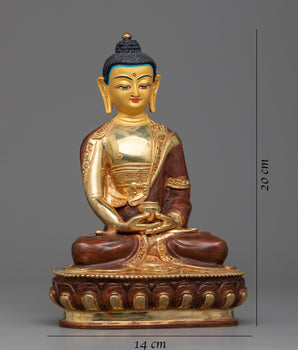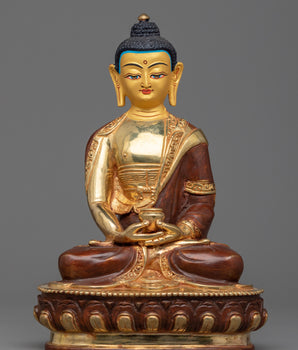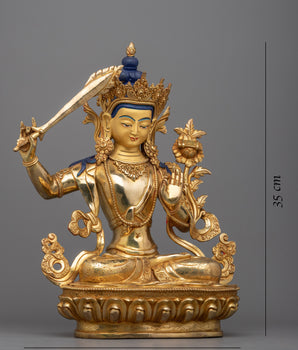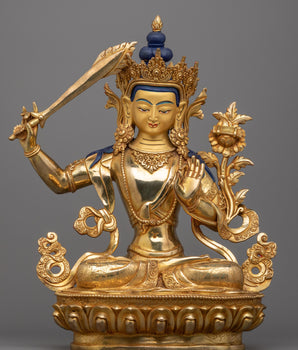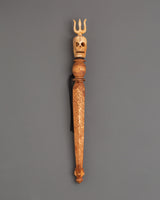

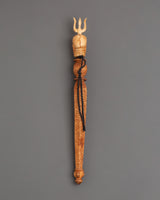
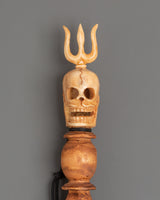
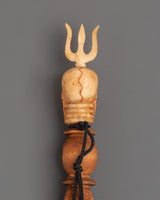
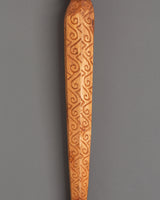
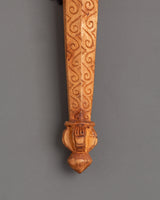
Sacred Phurba for Spiritual Ceremonies | Protection and Purification

100% AUTHENTIC

HANDMADE

FREE SHIPPING
Handmade Phurba for Spiritual Ceremonies | Tantric Wooden Skull Head Phurba
--------------------------------------------
Size: 32cm (Height) x 3cm (Width)
Weight: 0.080kg
Material: Wood, Ethically Sourced Buffalo Bone
--------------------------------------------
About The Ritual Item :
This sacred Tibetan Buddhist ritual dagger, known as the Phurba for Spiritual Ceremonies, has traditionally been employed in Vajrayana ceremonies to subdue bad energies and invoke protective forces. This Phurba stands 32cm tall, 3cm wide, and weighs 0.080kg. It is made of wood and responsibly obtained buffalo bone, combining natural materials with significant spiritual significance. The dagger is venerated as a symbol rather than a weapon, representing the power of transformation and the triumph of wisdom over ignorance.
The elaborate design includes a carved skull image at the top, crowned with a trident, which represents overcoming ego, the impermanence of life, and the threefold wisdom of body, speech, and mind. The handle is intricately decorated with etched designs, and the triple-bladed base symbolizes cutting through illusion and binding destructive forces. The combination of wood and bone craftsmanship emphasizes traditional creativity, making this Phurba a strong ceremonial tool as well as a one-of-a-kind spiritual treasure.
This Tibetan Buddhist ritual dagger is suitable for anyone participating in meditation, Tantric rites, or spiritual events. It is frequently displayed on altars, utilized in protection rituals, or used in energy activities to eliminate negativity. Beyond its ceremonial function, this Phurba serves as a reminder of spiritual discipline and inner fortitude, making it an important piece for collectors, practitioners, and anyone looking for a deeper connection to Tibetan Buddhist symbolism.
Introduction To The Phurba :
The ceremonial dagger (Sanskrit: Kila; Tibetan: phurba) is essential for expelling evil and is considered particularly effective in neutralizing the forces obstructing Tantric Buddhist practice. It has ancient origins, first appearing in the Indian Rig Veda as the core blade of the vajra used by Indra to destroy the primordial cosmic snake Vritra. Kila, derived from Sanskrit, was most likely associated with Vedic sacrifices. Meditation on the Vajrakila Tantra, an early Indian scripture first promoted in Tibet in the eighth century by Padmasambhava, one of the founding teachers of Tibetan Buddhism, is used to invoke the three-headed Vajrakila Buddha.
How to Set Up Your Buddhist Shrine?
Find a clean, quiet, and uncluttered spot.
Please set up an altar table and cover it with an altar cloth that calls to you.
Place your sacred item (statue, thangka, or a picture of Buddha) at the center.












